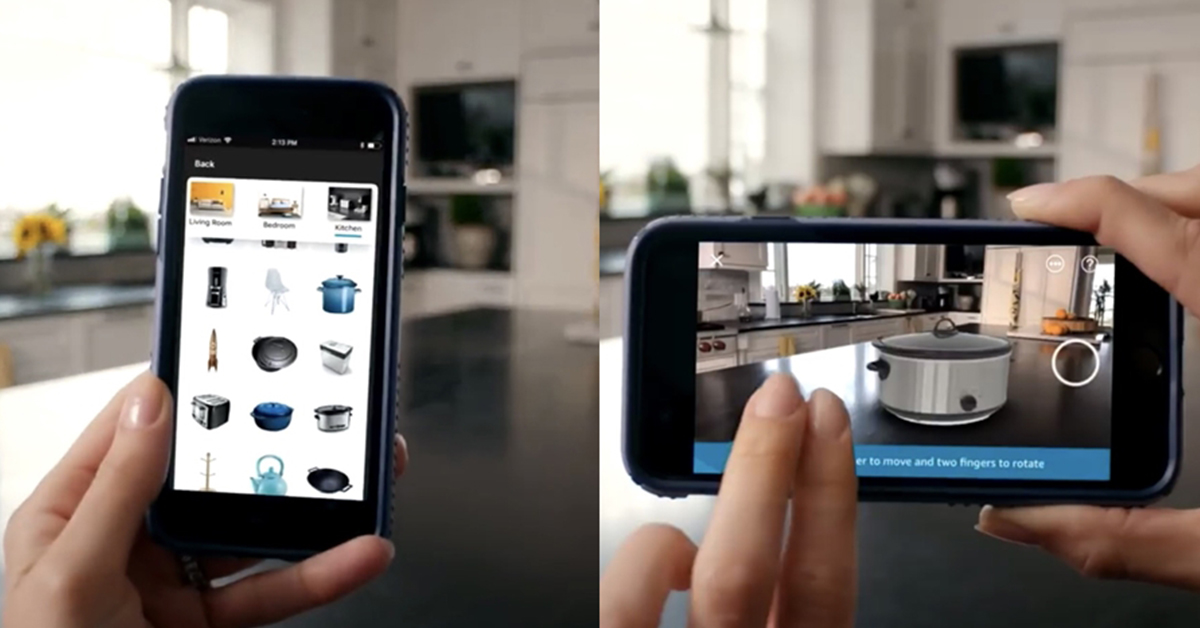
There is an old sentence saying that “a picture is worth a thousand words”. Although it is a long time ago, it is perfect for today’s e-commerce retailers. Only high-quality product images can increase the conversion rate and obtain the desired return. With the development of technology, now we can use some 3D software to create cheap, easy-to-understand visual content. And these contents are no longer limited to static images. It’s like today’s retailers can provide customers with augmented reality (AR), virtual reality (VR) and 3D experiences to help customers understand the changes in their products during the purchase process. Below are Benefits of AR, VR, 3D CG in Business.
Benefits of AR, VR in Business
1. Retail AR : Provide product preview
According to a survey, e-commerce retailers will lose about 75% of their potential sales due to consumers abandoning their shopping carts. The main reason for consumers to abandon their shopping carts is because the retailer does not provide a satisfactory return policy.
So what should I do if I encounter this problem? You can solve this problem by simply providing augmented reality technology on your website, by showing your customers exactly how your product will look in their expected environment. Reassure customers that your products are shipped as expected, so they don’t need to return them once they receive it.
So how does AR work specifically?
For example, furniture retailers may allow customers to use the camera function of a smartphone or tablet to superimpose the image of the sofa on the image of the living room. AR solutions are often best for retailers who sell large or expensive items that are inconvenient to return, or for consumers who want an experience before buying. These are precisely the unique features of AR. By combining real-world images with digital rendering, AR provides shoppers with a sense of the size, proportions, and details of the product so that they can make a decision about whether to buy the product.
2. VR
Virtual reality allows shoppers to have a completely immersive virtual experience, usually through some kind of headset. Although some retailers (such as IKEA and The North Face) have provided VR experiences in stores, we found that shoppers are often less comfortable using VR in public places, and most consumers think it is more comfortable at home.
Retailers can use virtual reality technology to answer common questions or relieve anxiety by providing virtual space tours. E.g: Food vendors can show you the gluten-free food section of their store, and even the factories that produce gluten-free food. This will eliminate allergies and other dietary restrictions on environment pollution concerns.
The gym can provide potential members with an opportunity to visit the gym without affecting the sweating exercise of existing members. Another advantage of this is that it allows you to see the best condition of the gym instead of rushing.
Of course, these experiences require consumers to wear VR headsets. Although the overall popularity is still not high, the improvement of equipment is attracting more and more consumers to buy, which means that VR may have a greater impact in the near future.
3. 3D CGI rendering: sell without a prototype.
When it comes to using 3D as a product visual effect, there are actually two different strategies: 3D product rendering is used to produce photorealistic two-dimensional images and interactive 3D.
The former involves using software to create ultra-realistic 2D images from CAD or other digital designs. Compared to traditional photography, this process is extremely cost-effective, because after the initial image is created, it allows the retailer to adjust and process more variations of images as needed.
Creating an image from 3D rendering is most suitable in the following situations:
·The product or prototype has not been manufactured, but you want to start accepting orders.
· Your photography budget is limited (for example, if you want to take a photo of a product from a long distance, 3D rendering can do this without taking photos on site).
·You have a large catalog of goods.
·Your catalog is updated frequently.
·You want to experiment with different backgrounds.
· You want a 360-degree photo.
Crucially, consumers cannot distinguish the difference between an image created from a rendering and a “real” photo. Therefore, you can get similar or better quality at a fraction of the cost of traditional photography.
Interactive 3D CGI: Eliminate all doubts
The second application of 3D is to create fully interactive 3D visual effects on your site, which shoppers can manipulate, animate or configure to meet their needs. This technique is often best suited for:
·Expensive or high-end products that shoppers want to understand from all angles before buying.
·Intricately detailed items, including machine components.
· Items that are returned frequently (the ability to see things from all angles prevents accidents and may reduce returns).
·Technical projects with complex internal structures can be explained by virtualization failures (such as football headsets with additional safety features).
When shoppers operate interactive 3D visual effects on handheld devices, they enjoy a feeling similar to personal experience in a physical store, which can help them gain confidence in what they buy.
Hope this can help!
Continues Reading :
3D Rendering vs Photography, for Product E-commercial
What is CGI ? Benefits to use CGI technology
How to Make 360 VR Video for Youtube | Among Us walk cycle animation
Welcome to share with your friend.
by [email protected]
